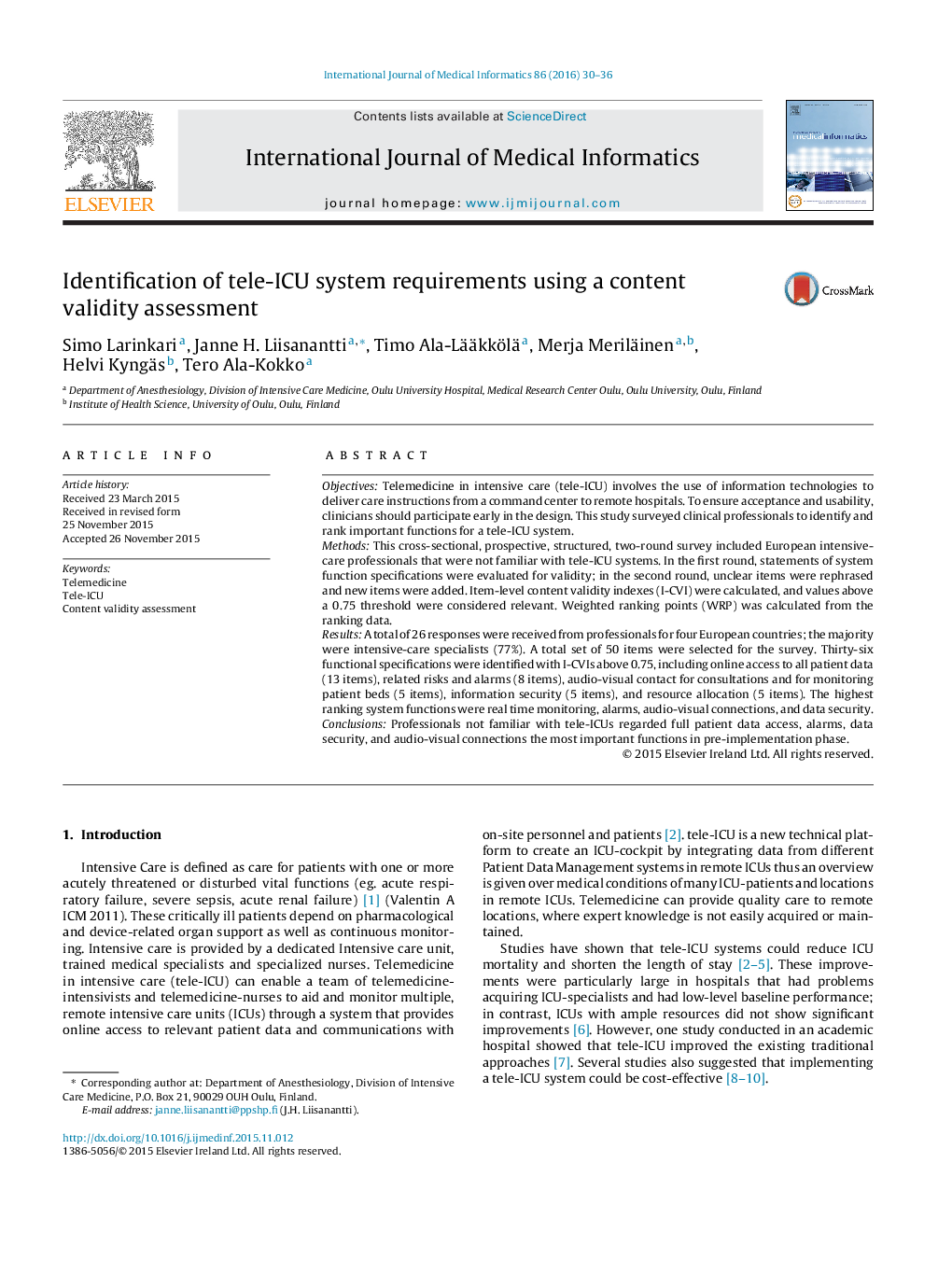| Article ID | Journal | Published Year | Pages | File Type |
|---|---|---|---|---|
| 516079 | International Journal of Medical Informatics | 2016 | 7 Pages |
•We present a pre-implementation survey of system requirements for tele-ICU.•Most of the respondents did not have experience on tele-ICU.•Audio-visual connection between units and data security were seen important.•The system should include access to all online data and alarms.•The results can be used in designing and evaluating a tele-ICU system.
ObjectivesTelemedicine in intensive care (tele-ICU) involves the use of information technologies to deliver care instructions from a command center to remote hospitals. To ensure acceptance and usability, clinicians should participate early in the design. This study surveyed clinical professionals to identify and rank important functions for a tele-ICU system.MethodsThis cross-sectional, prospective, structured, two-round survey included European intensive-care professionals that were not familiar with tele-ICU systems. In the first round, statements of system function specifications were evaluated for validity; in the second round, unclear items were rephrased and new items were added. Item-level content validity indexes (I-CVI) were calculated, and values above a 0.75 threshold were considered relevant. Weighted ranking points (WRP) was calculated from the ranking data.ResultsA total of 26 responses were received from professionals for four European countries; the majority were intensive-care specialists (77%). A total set of 50 items were selected for the survey. Thirty-six functional specifications were identified with I-CVIs above 0.75, including online access to all patient data (13 items), related risks and alarms (8 items), audio-visual contact for consultations and for monitoring patient beds (5 items), information security (5 items), and resource allocation (5 items). The highest ranking system functions were real time monitoring, alarms, audio-visual connections, and data security.ConclusionsProfessionals not familiar with tele-ICUs regarded full patient data access, alarms, data security, and audio-visual connections the most important functions in pre-implementation phase.
